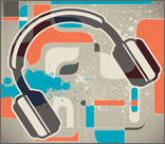Applied Evidence

How can we better manage difficult patient encounters?
These communication strategies—including 2 mnemonics and an at-a-glance guide—can help you help patients with unexplained complaints.
John Hickner, MD, MSc
Editor-in-Chief

As Chief of Family Medicine at our hospital, I have been spending a lot of time reviewing visit notes. The Joint Commission requires Ongoing Professional Performance Evaluations (OPPEs), which for family physicians includes quality of documentation of office visit notes. Judging quality, beyond the presence or absence of the usual suspects—history of present illness; pertinent medical, family, and social histories; physical exam; meds; problem list; assessment; and plan—is difficult because there are no standard, objective criteria. After reviewing many charts from several organizations, however, I’m concerned that 3 important elements of documentation are getting short shrift in our increasingly computerized and regulated environment: the history of present illness, the assessment, and the plan.
I think today’s EHRs are like an old-fashioned crank phone and what we really need is an iPhone. Clicking on a checklist of symptoms seldom provides sufficient information about the patient’s illness. “Hypertension” and “type 2 diabetes” are not assessments; they are diagnoses that do not tell the person reading the electronic health record (EHR) how the patient is doing. A diagnosis of “abdominal pain” without a prioritized differential is inadequate, especially in court.
Why is visit documentation too often inadequate? I am convinced it is rarely due to clinician incompetence, laziness, or lack of knowledge, but nearly always due to a combination of inadequate EHR formats and billing documentation requirements that encourage quantity rather than quality. Documentation is no longer driven by the essential need to record the care provided.
I’m sure a lot of you are nodding your heads in agreement. You all know what those EHR notes look like—cluttered with cut-and-pasted information drawn from prior encounters that document no end of details regarding medical, family, and social histories, facts that are often completely irrelevant to the reason the patient is in the office today. And unless one meticulously updates those other elements of the patient’s record, this information pulled into the note may be inaccurate.
I am not the only one complaining. The American Medical Association just published Improving Care: Priorities to Improve Electronic Health Record Usability,1 which outlines 8 priorities for EHR improvement. The first is to “Enhance physicians’ ability to provide high-quality patient care.” I could not agree more. I think today’s EHRs are like an old-fashioned crank phone and what we really need is an iPhone.
Something has got to change.
So tell me: Have any of you figured out how to use your EHR to enhance the quality of your documentation?

These communication strategies—including 2 mnemonics and an at-a-glance guide—can help you help patients with unexplained complaints.

Geoffrey Mills, MD, PhD, describes how to get reimbursed for postdischarge care.

This study found that there is alignment between a patient’s reason for a visit and the physician’s main concern 69% of the time. Less than fully...
